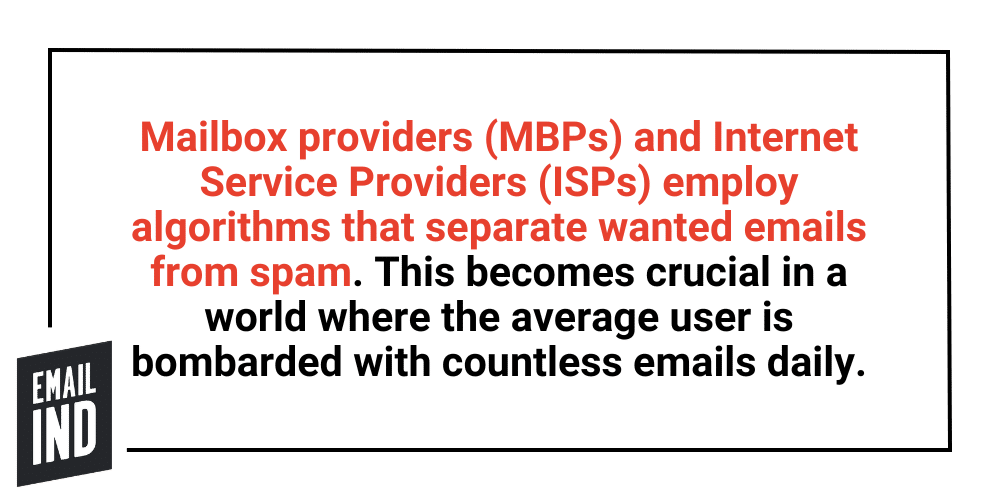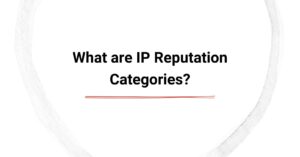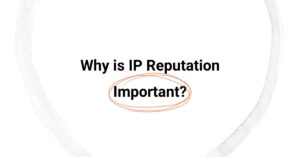As a marketing professional, you understand the significance of preparing compelling email content. You spend time perfecting subject lines, email copy, and designing visuals to engage your audience. But what if all your efforts are in vain because your emails never even reach the recipient’s inbox? In this article, we’ll explore how email content influences deliverability and share a few actionable best practices for ensuring your messages land where they belong. Let’s jump in.
Why Email Content Matters for Deliverability
Imagine your email campaigns as vehicles racing toward their destination: your subscriber’s inbox. The road to deliverability is paved with several checkpoints, and email content is a vital component that determines whether your vehicle reaches its target or reaches a dead end: the spam folder.

One important aspect of email deliverability is spam filtering. Mailbox providers (MBPs) and Internet Service Providers (ISPs) employ algorithms that separate wanted emails from spam. This becomes crucial in a world where the average user is bombarded with countless emails daily. Therefore, it’s essential to know what triggers spam filters and avoid those pitfalls. Certain elements of email content may influence those filters. What are some mistakes marketers make?
Common Email Content Mistakes that Impact Deliverability
Certain email content elements act as red flags for spam filters. Avoiding these pitfalls can significantly improve your email’s deliverability:
Overuse of Capitals: TYPING IN ALL CAPS might grab attention, but it also signals desperation and can get your email flagged. It is usually seen as shouting at someone and this is definitely something we’d want to avoid towards our subscribers, right? Aim for a balanced use of capitalization. Capitalize only certain words that strengthen your message.
Excessive Exclamation Marks: While a single exclamation mark can boost subject line engagement, multiple exclamation marks can mark your email as spam. Not all sentences require exclamation marks. They make your messages sound overly excited and, let’s be honest, your subscribers aren’t nearly as excited about your offers as you are.
Image-Only Emails: Relying solely on images can backfire. Too many images increase the email size, triggering spam filters. Use images judiciously, and include alt-text. Text-based emails may feel boring to you, but they make your messages a lot more accessible to people with any kind of vision loss. Remember, that keeping text in at least part of your emails ensures better accessibility and, in turn, higher ROI.
Using ‘Do-Not-Reply’ Addresses: These addresses are a red flag and are seen in emails way too often. Encourage engagement by using a brand inbox that allows recipients to communicate with you. A “do not reply to this email” message drastically decreases any chances of recipients interacting with your emails. Whether it would be responding to it and asking more questions about your offer, or clicking on any links in the email body.
Special Characters in Subject Lines: Special characters can enhance subject lines, but they should be meaningful. Using them randomly might lead to spam filtering. Another problem occurs when you use international characters for a different purpose than communicating in a particular language. Such practice triggers spam filters, especially when you switch certain letters with international characters that resemble the latin ones. The Greek letter Σ may look like E, but it’s not the same. Similarly, a Russian н looks like H, but is pronounced differently.
Another thing to keep in mind is that special characters are often a hallmark of homograph attacks. Luckily, the spam filter will know programmatically which character is inserted, even if it fools the users. Spoofing a reference to a legitimate brand by using international characters may look like this: Emaïl Industrïes.

Best Practices for Email Content and Deliverability
Now that we’ve explored the email content mistakes to avoid, let’s dive into best practices to boost email deliverability:
Unsubscribe Option: Make it easy for recipients to unsubscribe. A visible and hassle-free process reduces the chances of your email being marked as spam. Avoid using small fonts, same colors, difficult-to-find and expired links. As much as you don’t wish for your subscribers to opt out, they need to be given this option in case your content becomes irrelevant to them. Don’t forget to test your unsubscribe button to check, if it really works!
Brand Presence: Incorporate branded elements such as logos and domain-linked email addresses. This strengthens the connection between content and brand. A good practice is to implement BIMI. Displaying a logo next to an email in the inbox can help users recognize your brand, and build a positive association with it. When they repeatedly see your branded messages, your brand becomes more familiar and trustworthy. In the long run, they can convert into more loyal customers.
Dynamic Content: Personalize emails with dynamic content. This enhances engagement and can also be used for testing. Such content changes based on user data, their behaviors, and preferences. Users appreciate personalized experience and are more likely to get back to you and remember your brand.
Segmentation: Divide your audience into segments based on interests and subscriber behavior. Targeted campaigns improve email deliverability and sending well targeted messages to a relevant audience will always bring you better results compared to sending a similar message to all your contacts, even those potentially uninterested in your offer.
Concise Subject Lines: Avoid misleading subject lines with spam trigger words. Opt for clear and concise subject lines that resonate with recipients. Try and stay within a 60 characters limit to avoid your subject line from being cut off and not delivering your full message.
Unsubscribe Links: Include clear unsubscribe links to respect recipients’ choices and legal requirements. This also helps reduce spam complaints. However, do make sure your unsubscribe link actually works. There’s nothing more annoying than receiving unwanted communication despite opting out from a list.
Avoid Link Shorteners: Use branded links instead of generic shorteners. This builds trust and reduces the chances of your email being marked as spam. As much as link shorteners can be useful in social media, for example, email messages need to contain a clear URL to reduce the risk of entering an unwanted or spam website.
Final Thoughts
In email marketing, content isn’t just king—it’s the bridge that leads your messages to the inbox. By avoiding spam triggers and embracing best practices, you can make sure your emails resonate with recipients while still landing in the inbox. Remember, the journey to successful email campaigns begins with content that’s not only engaging but also strategically crafted for optimal deliverability.

Email Industries experts are here to support you with thoughtful and engaging email marketing and email deliverability strategies. Our consultants work alongside you to optimize subscriber experiences, boost engagement, and drive profits.
Schedule a discovery call with us today to learn more about how we can enhance your email deliverability and empower your marketing campaigns. Remember, success in the inbox starts with your content.









